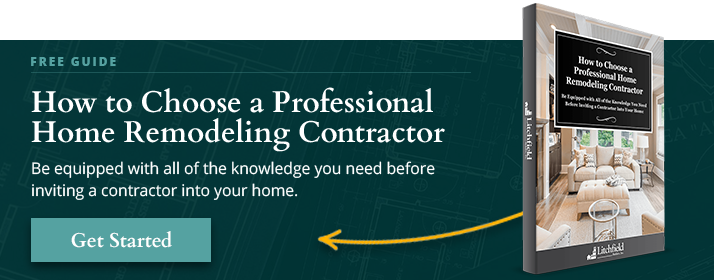ADUs for Aging in Place: Enhancing Accessibility and Comfort in Connecticut Homes
ADUs are quickly becoming a common feature in Connecticut homes. For some families, the ADU is the perfect space for an older relative who is seeking to maintain some independence while living near or with someone who can provide assistance when needed. For occupants with mobility problems or other health concerns, accessibility is a crucial feature of the ADU construction.
The most important thing you can do to ensure that your ADU is accessible is to work with a team of experts that understands the principles of accessible design. Aligning yourself with the right professionals can help ensure that your ADU will be accessible and safe. This is what you should know about building accessible ADUs on your Connecticut property.
Features of An Accessible ADU
Accessible ADUs are designed to be used by a wide range of occupants. Some common features of accessible design include:
- Wide doorways and hallways
- Ample floor space in each room to make mobility easy for someone with a wheelchair or walker
- No stair steps leading into the house, or a ramp is provided as an alternative
Generally speaking, most rooms don't require a lot of special attention when it comes to accessibility. However, two rooms specifically standout for needing special treatment in accessible design: the bathroom and kitchen. These rooms have special considerations because they serve a specific task that can be difficult for individuals with mobility challenges.
In fact, bathrooms have been called the most dangerous room of the house. In 2008, almost 22 million Americans older than 14 were injured in the bathroom, with over 200,000 of them seeking treatment in the emergency room. Each year, 14% of people injured in the bathroom seek treatment in the hospital. There are many things that your design team can do to make the kitchen and bathroom safer places.
Accessible Bathroom
Falls are one of the most common causes of injury in the bathroom. This tight space with slippery floors and many water sources is a natural location for many types of injuries. Making small changes to this space can make a big difference. Some examples of design choices that can improve safety and accessibility in the bathroom:
- Wider shower. A wider shower allows for use of assistive devices in the shower, while also making the shower easier to navigate. This can prevent falls.
- Curbless shower design. The curb over the edge of the shower makes getting into and out of the shower more difficult, while also providing an opportunity for someone using the shower to trip and fall. Curbless showers are easier to use and present no opportunity to fall.
- Space around the toilet. The toilet is a difficult fixture to use if you have a mobility device like a wheelchair or walker. Installing extra space around the toilet makes it easier to transfer to the toilet from that mobility device.
- Taller toilet. Accessible toilets are a little wider and a little taller to make sitting down and standing up easier during use.
- Grab bars. Grab bars make using the shower and toilet easier and safer by providing something for balance and stability.
- Non-slip floors. Floors made of non-slip material help prevent falls in the bathroom, even when water is on the floor.
Accessible Kitchen
The kitchen can be very difficult to use if you have mobility challenges. Here's what your building team can do to make your ADU kitchen easier to use.
- No cabinet under the sink. Eliminating the cabinet under the sink allows wheelchair users to roll up to the sink.
- Countertop heights lower. Lower countertops make it easier to use the countertop from a wheelchair.
- Wider space between the island and counter. Wider spaces between the countertop and island prevent accidents and allow someone with a wheelchair or walker more space to navigate.
- One handle faucet. One handle faucets are easier to modulate between hot and cold without constantly adjusting two handles.
How to Build An Accessible ADU
If it's important to you to build an accessible ADU in CT, start by assembling the right team of people. When you're looking for a builder, ask them about their experience building accessible residential structures and ADUs. Ask to see pictures and check references. Read the whole contract before signing, and if you're not comfortable with some aspect of the contract, don't sign.
Do I Need An Architect?
If you're building an Connecticut ADU that is only mildly accessible - in other words, not intended for occupancy by someone with extreme accessibility needs - then a capable design-build contractor should be adequate for your project. If you're in need of a specialized design for someone with intensive mobility issues, then your design build contractor may refer you to an architect.
Consider Needs for the Future
When you're building an ADU on your property, accessibility may not seem important if the intended occupant is your child who is a new college graduate. However, focusing on accessible design gives you options for the future. Once your college graduate moves out, who will take their place? Asking yourself these questions now may allow for more options in the future.
Need Help Assembling the Right Team? Download Our Free Guide
Early in the process of your Connecticut ADU construction project, it's important for you to find a good team. Litchfield Builders has a free guide to help with this. Take a look at our guide to learn more about hiring the right contractor for the job. If you have questions about building an accessible ADU on your property, give us a call. Our designers would be happy to discuss your upcoming project.
About Kevin Ahern
Kevin is the Co-Founder of Litchfield Builders, an award-winning, industry leader with a reputation for managing projects others shy away from. They are known for their high-quality work, customer service, and reliability and though still relatively small in size, Litchfield Builders now competes with some of the areas largest firms in both the residential and commercial arenas.






